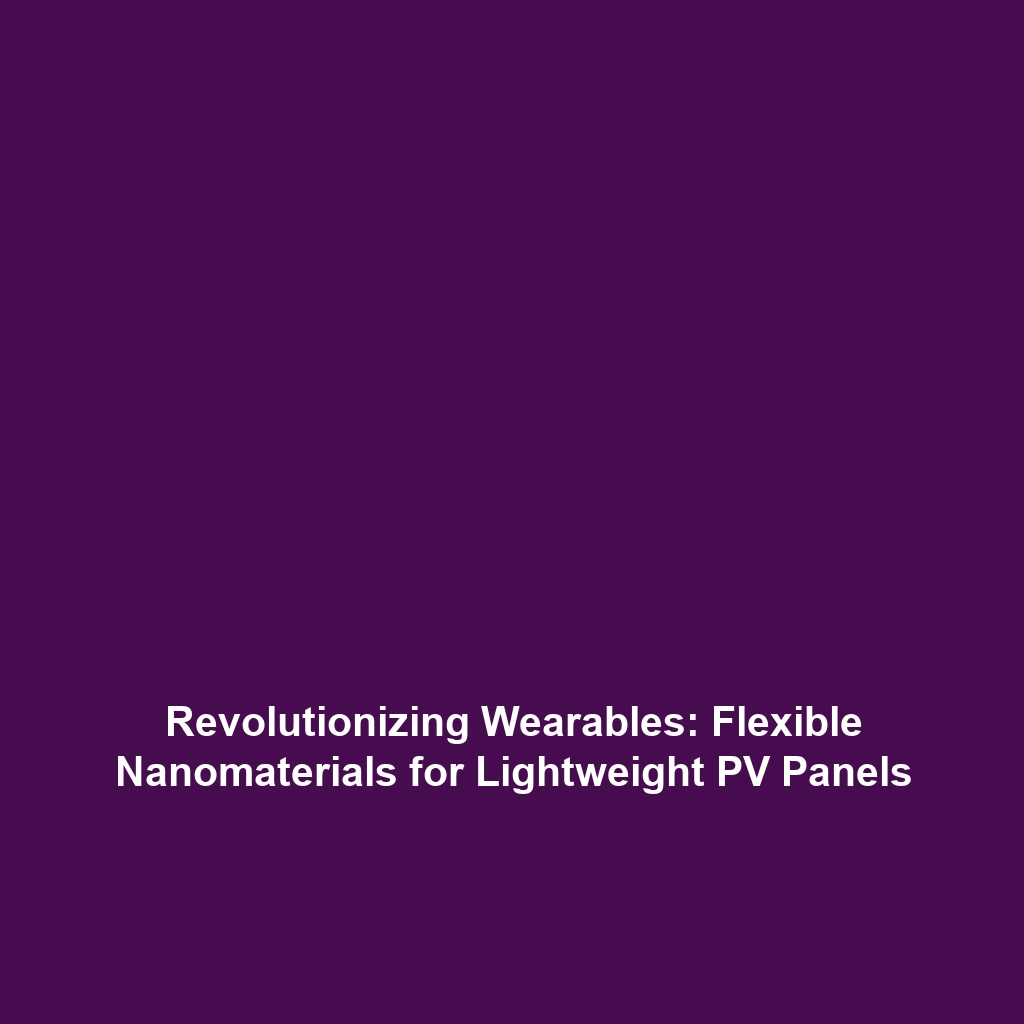Nanomaterials Enable Flexible, Lightweight Photovoltaic Panels for Wearable Devices
Introduction
Nanotechnology has transformed the landscape of advanced materials, particularly in the development of flexible and lightweight photovoltaic panels for wearable devices. These cutting-edge nanomaterials are not only enhancing energy efficiency but are also paving the way for innovative applications in personal electronics, health monitoring, and sustainable technology. As industrial demands for portable energy solutions increase, advancements in advanced nanomaterials play a critical role in creating functional, thin, and flexible systems that power the next generation of wearables.
Key Concepts
Understanding Nanomaterials
Nanomaterials are materials engineered at the nanoscale, typically between 1-100 nanometers. Their unique properties, derived from their small size and high surface area, allow for superior performance in various applications, particularly in photovoltaic technology.
Photonics and Energy Conversion
The integration of nanomaterials in photovoltaic cells facilitates better light absorption and enhances energy conversion efficiency, key factors in enhancing the functionality of photovoltaic panels. Their lightweight and flexible nature makes them ideal for incorporation into wearable devices.
Applications and Real-World Uses
The applications of nanomaterials in flexible, lightweight photovoltaic panels are vast and impactful:
- Smart Clothing: Incorporation of solar energy harvesting into fabric, allowing clothes to charge devices on the go.
- Wearable Health Monitors: Devices equipped with nanomaterial-based photovoltaic cells can self-charge using sunlight, enabling continuous tracking of vital signs.
- Portable Electronics: Lightweight solar panels integrated into wearable tech provide dependable power sources for smartphones and tablets.
Current Challenges
Despite the exciting prospects, challenges persist in the domain of nanomaterials and photovoltaic panels:
- Durability Issues: Flexible panels may be less durable than traditional solar technology.
- Cost of Production: The manufacturing processes for high-quality nanomaterials can be expensive.
- Efficiency Limitations: Current nanomaterial technologies may not yet match the efficiency of conventional photovoltaic solutions.
- Environmental Concerns: The impact of nanomaterial production and disposal on the environment requires careful evaluation.
Future Research and Innovations
Future research into nanomaterials for photovoltaic applications points to promising breakthroughs:
- Next-Gen Nanomaterials: Development of novel nanocomposites and quantum dots that enhance light absorption and energy conversion efficiency.
- Biodegradable Options: Exploring environmentally friendly and biodegradable nanomaterials to mitigate ecological impact.
- Integration with IoT: Advances in nanotechnology may lead to better integration of photovoltaic solutions within the Internet of Things (IoT), improving functionality and user experience.
Conclusion
In conclusion, the role of nanomaterials in enabling flexible and lightweight photovoltaic panels for wearable devices showcases the transformative potential of advanced nanomaterials in renewable energy solutions. As the field progresses, further research and innovation are essential for overcoming current challenges and realizing the full possibilities of this technology. To stay informed on the latest in nanotechnology and its applications, explore our applications section and research updates.

